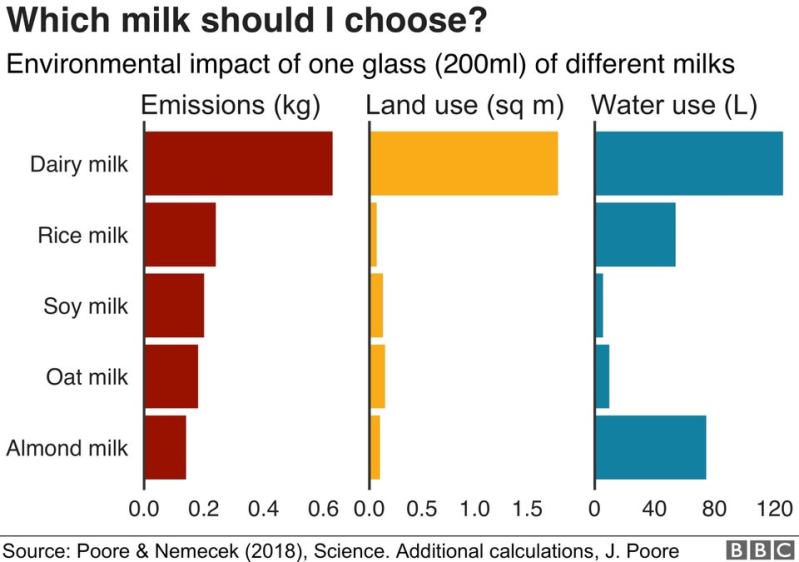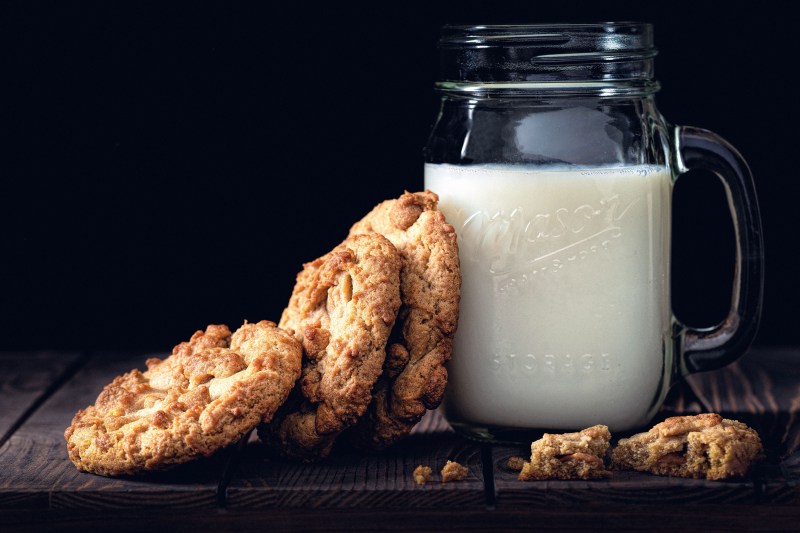Milk and other dairy-based foods are dietary staples for many cultures around the world. But unfortunately, dairy farming is one of the biggest contributors to greenhouse gas emissions globally. This has prompted many to make the switch to different types of milk, like soy milk and almond milk. But is non-dairy milk really better for the environment? This chart that recently went viral on Reddit may be able to provide some insight. Keep reading to learn more about the environmental impact of the types of milk and which one is the best choice.

Environmental impact of dairy farming
From the soil to the air, dairy farming can impact the environment in a number of ways. Here’s how:
- Greenhouse Gas Emissions: Dairy production releases harmful gases like methane, carbon dioxide, and nitrous oxide into the atmosphere, having a massive effect on climate change. Some of the biggest sources of these emissions include manure management, food growth, and enteric fermentation.
- Water Use: It takes a lot of water to grow cow feed, water the cows, manage manure, and process dairy products. Runoff from the fertilizer and manure used on dairy farms can also pollute water sources.
- Land Use: More than two-thirds of the world’s agricultural land is used for livestock, including dairy and beef cows.
- Soil Health: Livestock farming is one of the biggest contributors to soil erosion. Overgrazing, soil impaction from hooves, and transforming forests into pastures or feed crop areas cause topsoil loss that can take decades to replace.
- Air Quality: Ammonia emissions from cows can travel downstream, damaging habitats and causing a loss of species diversity. Particulates and odors from farm activities can also decrease air quality overall.
- Animal Welfare: The improper treatment of dairy cows can cause them stress and poor health, decreasing their productivity and creating an increase in greenhouse gas emissions.

Which type of milk is best?
Whether you use dairy milk or non-dairy milk, all types of milk will have an effect on the environment. However, the extent of the impact varies between the different types of milk. To learn which kind of milk has the lowest impact, we can turn to the chart created by the BBC using data from a 2018 study in Science. The chart compares the environmental impact of dairy milk, rice milk, soy milk, oat milk, and almond milk based on their emissions, land use, and water use.
With just one glance, you can see just how much worse dairy milk is for the environment than the other types of milk. But determining which one is the best is a bit of a toss-up. Rice milk uses the least amount of land, but it produces the second most emissions and has the third highest water use. Almond milk requires the second-highest amount of water but produces the least greenhouse gas emissions.
When considering all of the data, it would seem that oat milk may be the best choice. Oat milk produces the second-lowest amount of emissions and uses the second-lowest amount of water. And, while its land use is the second highest of the bunch, it’s still below 0.5 sq m per glass.
When it comes to types of milk, you have a lot of choices available. And though dairy milk may have been the top selection for years, new research shows just how disastrous it is for the environment. Switching to non-dairy milk can reduce your personal environmental impact drastically—no matter which one you choose. But if you’re looking for suggestions, swap your cow milk for oat milk for the biggest positive effect.



